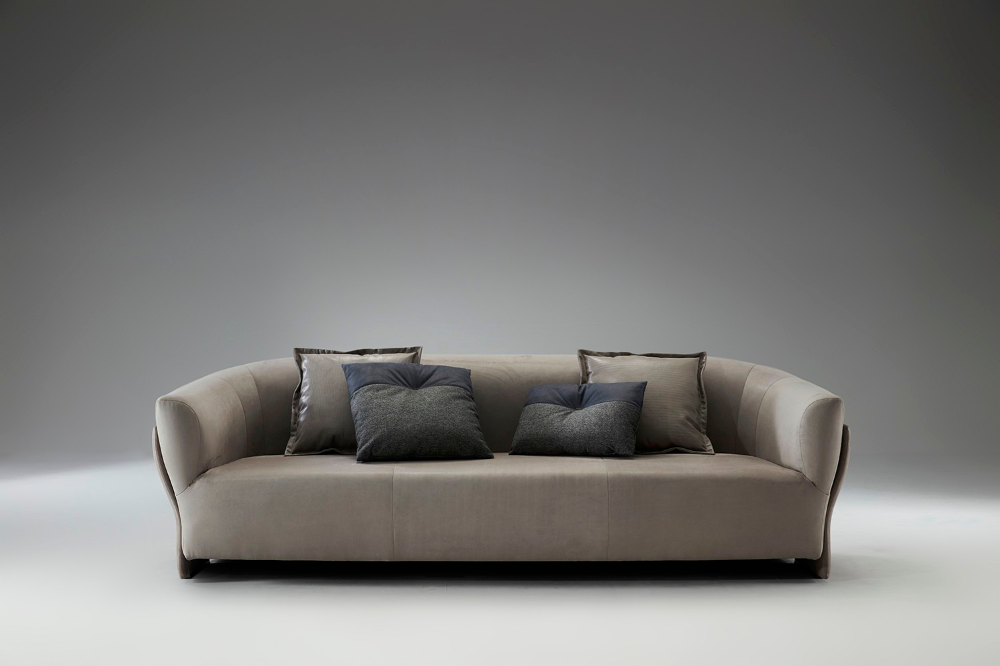When looking to purchase a new sofa, one of the most important considerations is its overall durability and lifespan. With proper construction, materials, and care, a quality sofa can last 10-15 years or longer. There are several key factors that determine how long a sofa will last before needing replacement.

The Importance of a Strong Frame
The sofa’s underlying frame impacts durability more than any other factor. A sturdy hardwood frame made from kiln-dried oak, maple, or ash will resist cracking and warping for many years of regular use. Softwood frames made from pine or spruce can deteriorate faster under heavy weight.
Hardwood frames are assembled using strong joining techniques like mortise and tenon joints, dowels, corner blocks, and reinforcement braces across the base and under seats. This creates rigid stability and prevents loosening or sagging over time.Joints should be tightly fitted, glued, and screwed together for maximum strength.
Stay away from frames made from lower quality particleboard, composite woods, or flimsy metal that can bend or snap with prolonged use. Also inspect the legs to make sure they are solid hardwood and not hollow fillers that crack easily.
High Quality Upholstery Fabric Matters
Upholstery grade fabric marked as having over 15,000 double rubs will resist abrasion and pilling for many years. Double rub testing simulates the wear and tear of someone sitting down and back up again. Sturdy backing material like canvas keeps the fabric taut across the frame.
Tightly woven fabrics made from durable synthetic or natural fibers last longer than loosely woven fabrics prone to snagging and tearing. Synthetic microfiber stands up to heavy use, while cotton and linen wear out faster unless blended with polyester or acrylic.
Pay attention to how the fabric is attached to the frame. Double doweled seams with fabric wrapped securely around two rods per seam are very durable. Simple stapled fabric detaches easier with use over time.
Cushion Quality Makes a Difference
With regular fluffing and rotation, a quality cushion filling maintains its loft and comfort for many years. High density polyurethane and latex foams keep their shape longer than lower density polyester fibers and down fillings.
Removable upholstered cushion covers can be replaced periodically to refresh a worn sofa’s look. Replacing just the covers extends the life of the sofa frame and cushions considerably. Zipped covers are easier to remove than those tied to the frame.
Down wrapped around foam or fiberfill core cushions offer softness but flatten permanently over time. Feather and down cushions require frequent fluffing to retain shape and will need replaced every 2-4 years in well used sofas.

Proper Care and Maintenance Go a Long Way
How a sofa is used and cared for directly impacts its lifespan. Family room sofas used daily wear out faster than formal living room sofas. Sofas in direct sunlight also show fabric fading and damage faster.
Vacuuming weekly and immediately treating spills and stains keeps upholstery looking newer longer. Rotate and fluff cushions regularly to prevent uneven wear. Try to lift cushions straight up instead of sliding them when moving them.
Protecting high use sofa areas with washable slipcovers helps reduce damage when small children or pets use the sofa. Periodic professional deep cleaning revitalizes fabric and removes embedded dirt and oils that can break down fibers.
Warranties Provide Insight into Expected Lifespan
Well-made sofas often come with longer warranties that reflect their expected lifespan under normal use. Check warranties closely to make sure they adequately cover cushion shape retention and defects in workmanship.
Beware of super cheap sofas with no warranties. Their poor quality materials and construction mean they likely won’t last beyond 2-4 years of regular use before falling apart. A bargain upfront price won’t seem like a good deal when you have to replace the sofa soon after purchasing it.
Material and Finish Choices Impact Durability
Certain upholstery materials and finishes hold up better under prolonged use. Consider these options for increased durability:
- Top grain leather lasts 15-20 years with proper care. It develops a patina over time versus cracking and splitting. Split grain and bonded leathers deteriorate faster.
- Matte finishes on both leather and woven fabrics disguise scuffs, scratches, and pilling that quickly make shiny fabrics look worn.
- Darker colors hide accumulated dirt and grime better than light hues like whites and tans that show every mark.
- Patterned fabrics mask localized wear, stains, and pilling better than solid fabrics. Busy patterns hide damage well.
- Polyester microfiber stands up to heavy daily use and resists stains, pilling, and fading exceptionally well compared to natural fibers.
Focus on Quality and Construction for Maximum Longevity
A sofa made using quality materials, sturdy construction, and strong workmanship can become a comfortable staple in your home for over a decade. While price alone isn’t an indicator of longevity, cheaper sofas made with flimsy frames, low grade upholstery, and poor cushioning often start falling apart after just 1-2 years of regular use. Spending a little more upfront on a well-built sofa with longevity in mind ends up saving you money and hassle in the long run.
